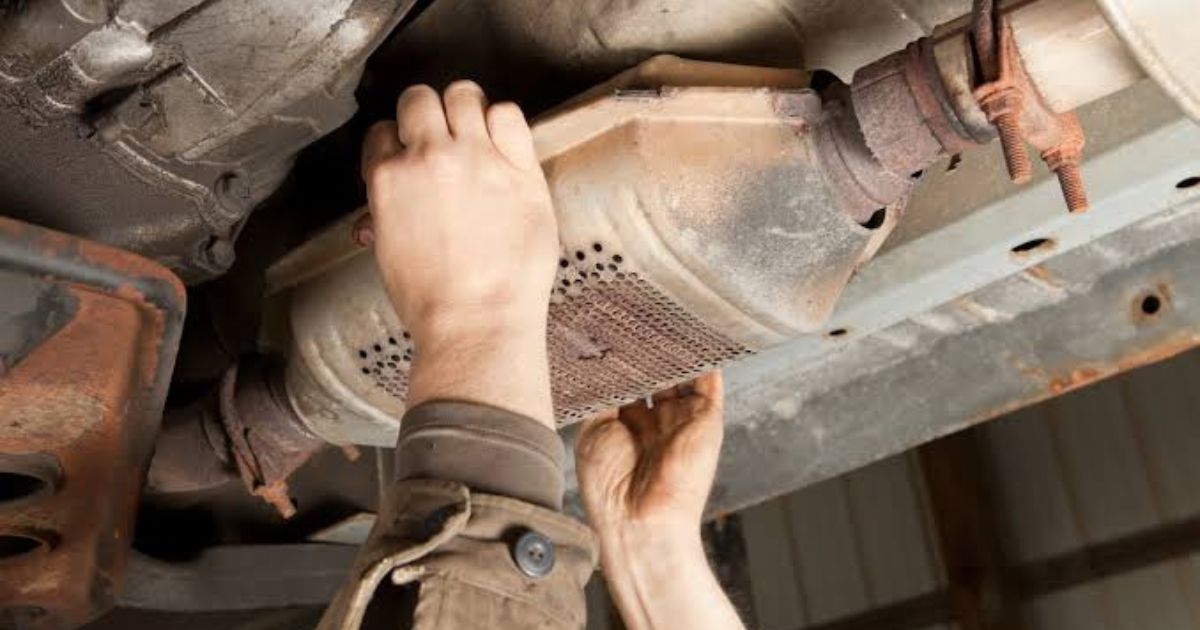Introduction
A catalytic converter is an essential part of your vehicle’s exhaust system, responsible for reducing harmful emissions. Over time, it can become clogged due to carbon buildup, oil contamination, or internal damage. A clogged catalytic converter can affect engine performance, fuel efficiency, and emissions. In this guide, we’ll discuss the common signs of a clogged catalytic converter, diagnostic methods, and possible solutions.
1. Signs of a Clogged Catalytic Converter
Before diagnosing the issue, watch for these common symptoms:
- Reduced engine performance – Loss of power, especially during acceleration.
- Poor fuel efficiency – Increased fuel consumption due to restricted exhaust flow.
- Check Engine Light (CEL) is on – Codes like P0420 or P0430 may indicate catalytic converter issues.
- Rattling noise from the exhaust – Broken ceramic material inside the converter.
- Sulfur or rotten egg smell – Caused by unburned fuel due to a blocked catalytic converter.
- Excessive heat from the exhaust – A clogged converter can overheat, sometimes causing the underside of the car to become extremely hot.
- Hard starts or stalling – Severe blockages can prevent the engine from running properly.
2. How to Diagnose a Clogged Catalytic Converter
Method 1: Checking for Exhaust Restriction
- Start your car and let it idle.
- Place your hand near the exhaust tip (without touching it) to feel the exhaust pressure.
- Weak or minimal airflow could indicate a blockage in the catalytic converter.
Method 2: Using a Vacuum Gauge
- Connect a vacuum gauge to the intake manifold.
- At idle, vacuum pressure should be around 18-22 inHg.
- If the reading drops significantly when revving the engine, it could indicate an exhaust restriction.
Method 3: Performing a Temperature Test
- Use an infrared thermometer to check the temperature before and after the catalytic converter.
- The outlet temperature should be at least 100°F higher than the inlet.
- If there’s little or no difference, the converter might be clogged.
Method 4: Checking with an OBD2 Scanner
- Scan for trouble codes related to the catalytic converter (e.g., P0420 – Catalyst Efficiency Below Threshold).
- Monitor oxygen sensor readings; if both the upstream and downstream sensors show similar readings, the converter may not be functioning properly.
Method 5: Removing and Inspecting the Converter
- If accessible, remove the catalytic converter and inspect it.
- Look for honeycomb structure damage, excessive carbon buildup, or signs of melting.
3. How to Fix a Clogged Catalytic Converter
Option 1: Using a Catalytic Converter Cleaner
- Add a high-quality catalytic converter cleaner to your fuel tank.
- Drive the vehicle at highway speeds to allow the cleaner to break down deposits.
Option 2: Performing an Exhaust Blowout
- Drive the car at high RPMs (above 3,000) on the highway to burn off excess carbon buildup.
Option 3: Removing and Cleaning the Converter
- If slightly clogged, remove the converter and soak it in a detergent-based cleaner.
- Use compressed air to blow out loose debris after cleaning.
Option 4: Replacing the Catalytic Converter
- If the converter is severely clogged or damaged, replacement is the only viable option.
- OEM replacements are recommended for optimal performance.
4. Common Mistakes to Avoid
❌ Using high-lead fuel – Can permanently damage the catalytic converter. ❌ Ignoring early warning signs – Delaying repairs can lead to engine damage. ❌ Drilling holes in the converter – This is illegal in most areas and reduces efficiency. ❌ Using excessive fuel additives – Some chemicals can damage the converter instead of cleaning it.
5. When to Seek Professional Help
If you’re unsure about diagnosing or fixing the issue, consult a mechanic. Professional services may include:
- Advanced diagnostics – Testing backpressure with specialized tools.
- Catalytic converter replacement – If cleaning doesn’t work.
- Emissions testing – To check if the vehicle meets legal emission standards.
Final Thoughts
A clogged catalytic converter can lead to poor performance and costly repairs if left unaddressed. Regular maintenance, using high-quality fuel, and driving at optimal speeds can help prevent issues. If you notice symptoms of a clog, diagnosing and addressing the problem early can save time and money.
